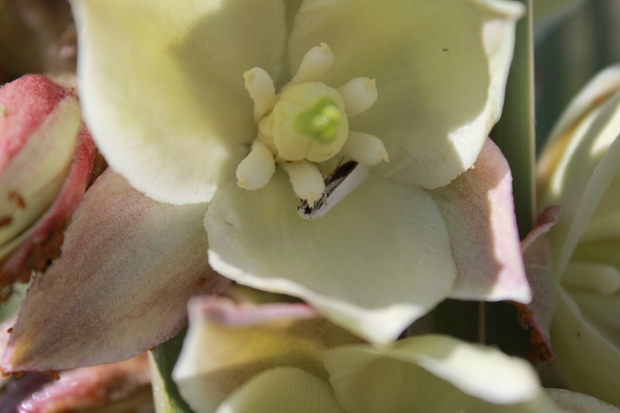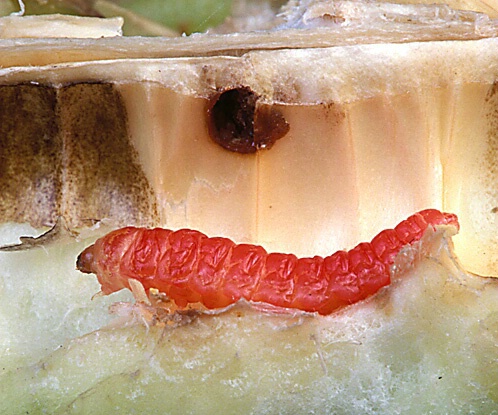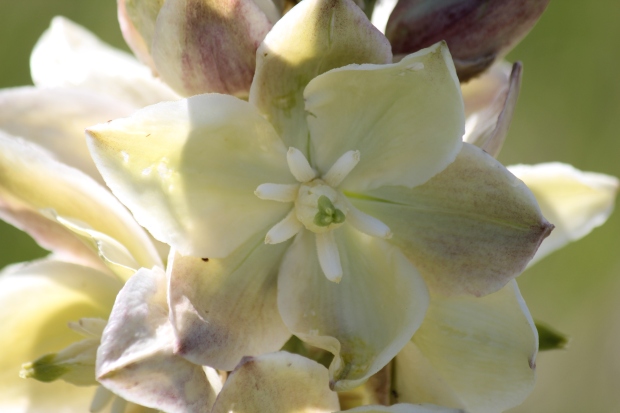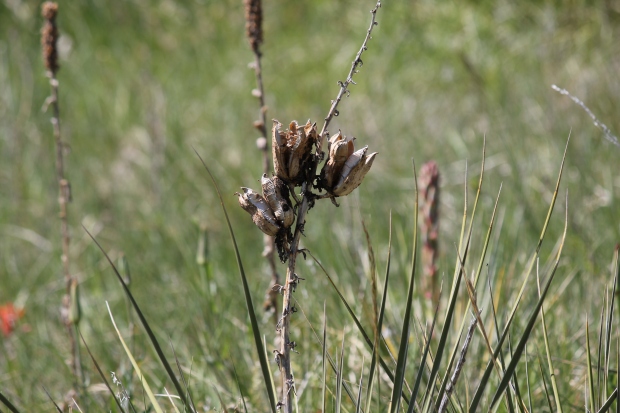This week I have the opportunity to teach children about the benefits pollinators presented to the Pueblo People, and I know you will enjoy this topic just as much, so here it goes!
YUCCA POLLINATION
Yucca plants rely on yucca moths to pollinate them, and yucca moths rely on yucca to feed their young.
Obligate mutualism is the name of the game with the yucca: yucca moth relationship. One cannot survive without the other.
 Female Yucca moth collecting pollen from the anther of a yucca bloom.
Female Yucca moth collecting pollen from the anther of a yucca bloom.
Yucca blooms open early summer, inviting visitors with sweet nectar and shelter within its petals.
Yucca blooms release the most concentrated scent at night, and produce the most nectar in the evening hours, and reason for this, is their most important pollinator flies at night.
Yucca moths fly at night, making them nocturnal. They search for a yucca bloom to take refuge in, and scent plays a large role in moths finding the blooms. Inside the yucca bloom, the yucca moths will mate.
Once mated, the female yucca moth will collect pollen from the anthers on the yucca bloom, and store it under her chin.
She will then fly to another yucca bloom, lay a few eggs, and deposit some pollen from under her chin onto the stigma of the bloom where her eggs will hatch. She knows this will result in seeds.
The larvae of the yucca moths feed on the seeds of yucca plants. The mother moth knows to lay only a few eggs in each bloom, so the bloom doesn’t abort and fail to feed her young.

Yucca larvae feeding on the seeds inside a yucca fruit.
In many cases, pollinators do not know they are pollinating flowers to form seeds, but this clever girl is very much aware of her purpose for the yucca plant. Her efforts benefit more than just her young.
YUCCA AND THE PUEBLO PEOPLE
The Pueblo people used the yucca plant from top to bottom!
The blooms are sweet, and can be eaten straight off the plant. Those blooms will also become a tasty fruit that can be eaten alone or paired with other foods.
 Yucca bloom wide open for visitors.
Yucca bloom wide open for visitors.
The leaves are tough and fibrous, and can be shredded down to pieces perfect for weaving baskets, sandals, and blankets.
 Yucca plant bearing a row of seed pods.
Yucca plant bearing a row of seed pods.
The tips of those fibrous leaves are sharp, and can be used as needles for sewing.
The roots of yucca plants make excellent soap and shampoo when ground into a pulp and mixed with a little water. The roots can also be used as a remedy for rashes and sores. They can be eaten, but have a soapy flavor.
 Yucca root and its’ pulp.
Yucca root and its’ pulp.
This pollinator isn’t a bee, but very important nevertheless! What a plant, and what a moth!
Thank you for joining the movement!
Jessica
Thanks, Jessica! What a wonderful bit of information that I didn’t know about. Thanks for sharing your knowledge about all the different pollinators!
LikeLiked by 1 person
Thank you, Becky, for reading and commenting. It’s so nice to hear from my readers!
LikeLike